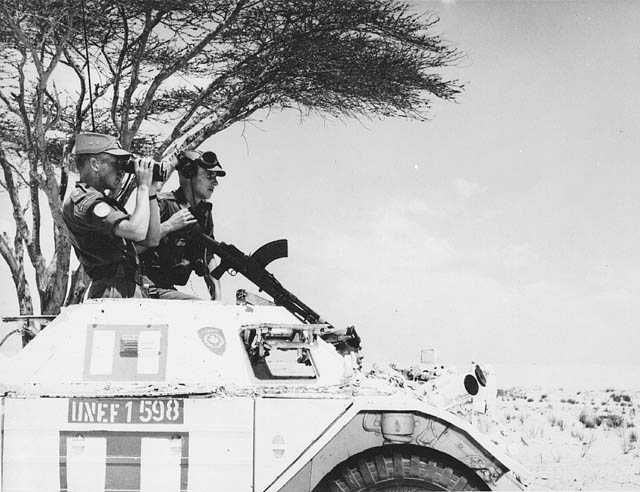Browse "Politics & Law"
-
Article
State
StateThe state is a broad concept that includes government as the seat of legitimate authority in a territory but also includes bureaucracy, judiciary, the ARMED FORCES and internal POLICE, structures of legislative assemblies and administration, public corporations, regulatory boards, and ideological apparatuses such as the education establishment and publicly owned media. The distinguishing characteristic of the state is its monopoly over the use of force in a given territory. The state as a concept in...
"https://development.thecanadianencyclopedia.ca/images/tce_placeholder.jpg?v=e9dca980c9bdb3aa11e832e7ea94f5d9" // resources/views/front/categories/view.blade.php
https://development.thecanadianencyclopedia.ca/images/tce_placeholder.jpg?v=e9dca980c9bdb3aa11e832e7ea94f5d9
-
Article
Statistics Canada
Statistics Canada is the nation’s central statistical agency. It was established in 1918 as the Dominion Bureau of Statistics and adopted its present name in 1971. Under the Statistics Act of that year, it has the responsibility to “collect, compile, analyse, abstract and publish statistical information relating to the commercial, industrial, financial, social, economic and general activities and condition of the people.” The agency works with government departments to develop integrated social and economic statistics for Canada and the provinces and territories. In addition, Statistics Canada is a scientific research organization that develops methodologies and techniques related to statistics and survey design.
"https://d2ttikhf7xbzbs.cloudfront.net/media/new_article_images/StatisticsCanada/Jean Talon Building.JPG" // resources/views/front/categories/view.blade.php
https://d2ttikhf7xbzbs.cloudfront.net/media/new_article_images/StatisticsCanada/Jean Talon Building.JPG -
Article
Status of Women
The first European expeditions that came to Canada to explore and trade for furs did not include women.
"https://d2ttikhf7xbzbs.cloudfront.net/media/media/be832524-f521-4200-b242-3c702ae0f3c4.jpg" // resources/views/front/categories/view.blade.php
https://d2ttikhf7xbzbs.cloudfront.net/media/media/be832524-f521-4200-b242-3c702ae0f3c4.jpg
-
Article
Statute of Westminster, 1931
The Statute of Westminster is a British law that was passed on 11 December 1931. It was Canada’s all-but-final achievement of independence from Britain. It enacted recommendations from the Balfour Report of 1926, which had declared that Britain and its Dominions were constitutionally “equal in status.” The Statute of Westminster gave Canada and the other Commonwealth Dominions legislative equality with Britain. They now had full legal freedom except in areas of their choosing. The Statute also clarified the powers of Canada’s Parliament and those of the other Dominions. (See also Editorial: The Statute of Westminster, Canada’s Declaration of Independence.)
"https://d2ttikhf7xbzbs.cloudfront.net/media/media/fb8b6e92-b549-4842-8b58-76626f1e9087.jpg" // resources/views/front/categories/view.blade.php
https://d2ttikhf7xbzbs.cloudfront.net/media/media/fb8b6e92-b549-4842-8b58-76626f1e9087.jpg
-
Article
Statute of Westminster 1931 Document
Statute of Westminster, 1931: DocumentSelected text of the Statute of Westminster:An Act to give effect to certain resolutions passed by Imperial Conferences held in the years 1926 and 1930 Whereas the delegates to His Majesty's Governments in the United Kingdom, the Dominion of Canada, the Commonwealth of Australia, the Dominion of New Zealand, the Union of South Africa, the Irish Free State and Newfoundland, at Imperial Conferences holden at Westminster in the years of our...
"https://development.thecanadianencyclopedia.ca/images/tce_placeholder.jpg?v=e9dca980c9bdb3aa11e832e7ea94f5d9" // resources/views/front/categories/view.blade.php
https://development.thecanadianencyclopedia.ca/images/tce_placeholder.jpg?v=e9dca980c9bdb3aa11e832e7ea94f5d9
-
Editorial
Editorial: The Statute of Westminster, Canada's Declaration of Independence
The following article is an editorial written by The Canadian Encyclopedia staff. Editorials are not usually updated. In the fall of 1929, Canada’s Minister of Justice, Ernest Lapointe, travelled to England. He took with him Dr. Oscar Skelton — the “elder statesman” of the Canadian civil service, as William Lyon Mackenzie King once described him. When Lapointe and Skelton were done their negotiations, they had confirmed that Canada would have its independence from the British Empire.
"https://d2ttikhf7xbzbs.cloudfront.net/media/media/43cb3921-bb9b-4a07-818d-0f1dfeb80b26.jpg" // resources/views/front/categories/view.blade.php
https://d2ttikhf7xbzbs.cloudfront.net/media/media/43cb3921-bb9b-4a07-818d-0f1dfeb80b26.jpg
-
Article
Steven Truscott Case
At the age of 14, Steven Truscott was wrongly convicted of killing his 12-year-old schoolmate Lynne Harper. Five decades later he was exonerated.
"https://d2ttikhf7xbzbs.cloudfront.net/media/media/3623c200-158f-4385-9756-3c4900055fcf.jpg" // resources/views/front/categories/view.blade.php
https://d2ttikhf7xbzbs.cloudfront.net/media/media/3623c200-158f-4385-9756-3c4900055fcf.jpg
-
Article
Stillman Case
In the Stillman case (1997), a majority of the Supreme Court of Canada held that the common law power to carry out a search incidental to an arrest did not include the right to forcibly seize samples of body substances.
"https://development.thecanadianencyclopedia.ca/images/tce_placeholder.jpg?v=e9dca980c9bdb3aa11e832e7ea94f5d9" // resources/views/front/categories/view.blade.php
https://development.thecanadianencyclopedia.ca/images/tce_placeholder.jpg?v=e9dca980c9bdb3aa11e832e7ea94f5d9
-
Article
Stinchcombe Case
The Supreme Court delineated, in the Stinchcombe case (1991), the legal parameters of a full and complete defence, as guaranteed by section 7 of the Canadian Charter of Rights and Freedoms. This had the effect of eliminating the legal uncertainty surrounding the disclosure of evidence by the Crown.
"https://development.thecanadianencyclopedia.ca/images/tce_placeholder.jpg?v=e9dca980c9bdb3aa11e832e7ea94f5d9" // resources/views/front/categories/view.blade.php
https://development.thecanadianencyclopedia.ca/images/tce_placeholder.jpg?v=e9dca980c9bdb3aa11e832e7ea94f5d9
-
Article
Stornoway
Stornoway is the official residence of Canada’s federal leader of the Opposition. It is located at 541 Acacia Ave in the village of Rockcliffe Park in Ottawa. Purchased in 1950 by a private trust, Stornoway has been owned by the Government of Canada since 1970 and managed by the National Capital Commission since 1986.
"https://d2ttikhf7xbzbs.cloudfront.net/media/media/d2b6590d-341d-4404-9720-e10d3b91116b.jpg" // resources/views/front/categories/view.blade.php
https://d2ttikhf7xbzbs.cloudfront.net/media/media/d2b6590d-341d-4404-9720-e10d3b91116b.jpg
-
Article
Strikes and Lockouts
A strike is the withholding of labour by workers in order to obtain better wages or working conditions. A lockout is the opposite, being the temporary shutdown of a business by an employer to compel employees to accept certain conditions.
"https://d2ttikhf7xbzbs.cloudfront.net/media/media/c762eef7-88b7-40c9-afbe-91aa60ae56dd.jpg" // resources/views/front/categories/view.blade.php
https://d2ttikhf7xbzbs.cloudfront.net/media/media/c762eef7-88b7-40c9-afbe-91aa60ae56dd.jpg
-
Article
Student Rights
Basically 2 sorts of rights apply to students: substantive rights - the actual rights that students should enjoy - and procedural rights - methods by which students claim their rights.
"https://development.thecanadianencyclopedia.ca/images/tce_placeholder.jpg?v=e9dca980c9bdb3aa11e832e7ea94f5d9" // resources/views/front/categories/view.blade.php
https://development.thecanadianencyclopedia.ca/images/tce_placeholder.jpg?v=e9dca980c9bdb3aa11e832e7ea94f5d9
-
Article
Substantive Law
Substantive Law, body of law concerned with rights and obligations, as opposed to PROCEDURAL LAW which concerns how to enforce and defend such rights and obligations.
"https://development.thecanadianencyclopedia.ca/images/tce_placeholder.jpg?v=e9dca980c9bdb3aa11e832e7ea94f5d9" // resources/views/front/categories/view.blade.php
https://development.thecanadianencyclopedia.ca/images/tce_placeholder.jpg?v=e9dca980c9bdb3aa11e832e7ea94f5d9
-
Article
Succession (Wills)
When a person dies, that person's property or its value is transferred to the persons entitled to it after payment of any outstanding debts and liabilities; this process is described as succession.
"https://development.thecanadianencyclopedia.ca/images/tce_placeholder.jpg?v=e9dca980c9bdb3aa11e832e7ea94f5d9" // resources/views/front/categories/view.blade.php
https://development.thecanadianencyclopedia.ca/images/tce_placeholder.jpg?v=e9dca980c9bdb3aa11e832e7ea94f5d9
-
Article
Suez Crisis
The 1956 Suez Crisis was a military and political confrontation in Egypt that threatened to divide the United States and Great Britain, potentially harming the Western military alliance that had won the Second World War. Lester B. Pearson, who later became prime minister of Canada, won a Nobel Peace Prize for using the world’s first, large-scale United Nations peacekeeping force to de-escalate the situation.
"https://d2ttikhf7xbzbs.cloudfront.net/media/media/7dd7a376-3b02-4487-a3cb-052649209f44.jpg" // resources/views/front/categories/view.blade.php
https://d2ttikhf7xbzbs.cloudfront.net/media/media/7dd7a376-3b02-4487-a3cb-052649209f44.jpg

